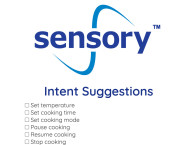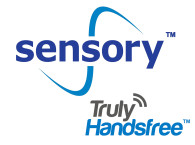
Voice running on-device continues to evolve consistently with improved embedded AI technologies. According to the Silicon Valley-based company, the innovation in TrulyHandsfree 7.0 stems from a new proprietary process, developed at Sensory through years of experience and the deployment of more than 3 billion products in the market. This approach leverages three independent and discreet recognition techniques bringing a game-changing edge over earlier versions by performing recognition with a unique orthogonal approach. TrulyHandsfree 7.0 offers a new standard for voice recognition accuracy while maintaining minimal energy consumption and an ultra-compact footprint.
"One of the key highlights of TrulyHandsfree 7.0 is its unparalleled accuracy. The integration of three distinct recognition techniques enables the system to consistently deliver remarkable performance in various real-world scenarios, providing users with an intuitive and reliable voice recognition experience. Whether in noisy environments or challenging acoustic conditions, TrulyHandsfree 7.0 offers industry-leading accuracy that sets a new benchmark for voice-enabled devices," Sensory states.

For more performance data request the full report.
The three orthogonal techniques that power TrulyHandsfree 7.0 run below the OS level to allow memory sizes down to 50KB and power consumption under 1 milliwatt. Additional accuracy can be achieved by Sensory through revalidation of larger models that can run on the operating system or SensoryCloud.
Despite its exceptional accuracy, TrulyHandsfree 7.0 maintains an incredibly small footprint and low power consumption. Its optimized design ensures minimal impact on system resources, allowing it to function effortlessly within the constraints of modern embedded devices. With this compact size, manufacturers can seamlessly integrate voice recognition capabilities into a wide array of products, from wearables and smartphones to smart appliances and automotive systems.
Sensory's VoiceHub web tool streamlines the creation of wake words, commands, and language models across various languages and platforms. Custom-built models featuring TrulyHandsfree 7.0’s innovative and proprietary recognition process are available now, with integration into VoiceHub expected in early 2024.
"We couldn’t be more excited to roll out TrulyHandsfree 7.0, which stands as a testament to our unwavering commitment to lead in low power high accuracy voice recognition technology,” states Todd Mozer, CEO at Sensory. "TrulyHandsfree 7.0 marks a significant leap forward in embedded, far field voice recognition technology, reinforcing Sensory's position as an industry leader in edge voice AI solutions. The integration of this new proprietary process underscores the company’s dedication to pushing the boundaries of innovation and delivering products that empower manufacturers to create exceptional user experiences."
"This latest update affirms our dedication to deliver advanced, reliable, and energy-efficient solutions that can be effortlessly integrated into a vast array of applications with multiple wake word requirements," he adds.
www.sensory.com






